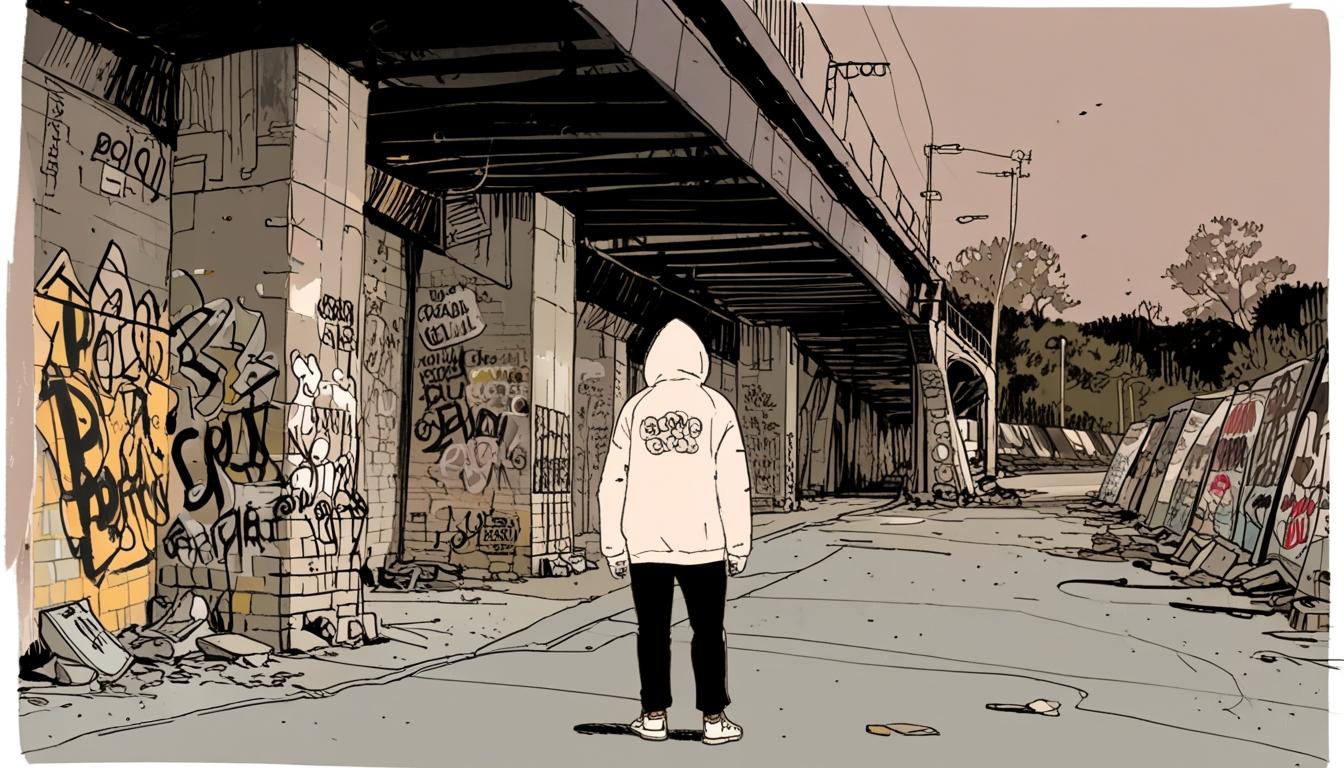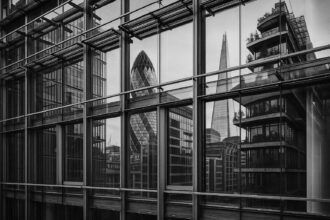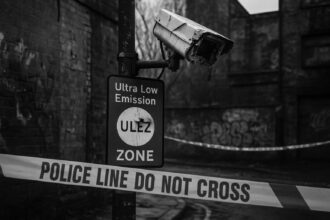Garston-under-the-Bridge reports the highest anti-social behaviour rates in Merseyside, with residents voicing fears over rising gang activity, arson, and a lack of community resources, while police prepare targeted patrols for 2025.
In a recent report from the Liverpool Echo, residents of Garston, particularly in the area known as Garston-under-the-Bridge, have expressed growing concerns over escalating anti-social behaviour. This region is reportedly experiencing some of the highest rates of such incidents across Merseyside, resulting in a community feeling increasingly neglected and endangered.
Garston-under-the-Bridge, defined by its location between the railway bridge on Church Road and the River Mersey, has seen a significant rise in crime and vandalism attributed to local youth gangs. During a discussion held in a children’s centre on Banks Road, three long-term residents—collectively having lived in the area for over a century—described an alarming transformation in their environment. One resident, identifying herself as Michelle, recounted her previous experiences with drug dealing in her old neighbourhood, stating, “The police were there every single night, I was terrified living there and so was my son.”
Sarah, another local, highlighted the concerning trend of older youths grooming much younger children into criminal behaviours, saying, “You see them walking around and you are thinking, why would a 20-year-old man be hanging around at night with an eight-year-old?” This situation has fostered an atmosphere where young children are allegedly encouraged to commit vandalism, including breaking windows and starting fires.
Data corroborates the residents’ fears: Garston reported the highest rate of anti-social behaviour in Merseyside last year, with 345 incidents recorded, equating to 53 reports for every 1,000 residents. The behaviours cited by locals range from vandalism and verbal abuse to gang intimidation and noise disturbances. In light of these issues, the charity Crimestoppers has launched a campaign in the area to promote its anonymous reporting service, aiming to empower residents to disclose information regarding crime without fear of retribution.
Superintendent Karl Baldwin of Merseyside Police acknowledged the complexities surrounding anti-social behaviour, stating, “The causes of anti-social behaviour are complex and there isn’t a quick fix.” He further outlined that Garston will be included in the Antisocial Behaviour Hotspot programme for 2025, which will feature increased police patrols aimed at addressing these community concerns. However, residents have expressed feelings of frustration, as they have witnessed gangs mocking law enforcement during attempted interventions.
Some of the contributors to the local unrest include a series of deliberate fires in the area, notably the arson of the former Woodcutters Social Club on Bonfire Night, which involved youths blocking the road and attacking emergency services. Residents report witnessing rampant activity in their neighbourhoods, with incidents such as illegal street racing and drug dealing occurring with alarming regularity. A resident named Sarah shared her experience of frequent disturbances: “I was woken up and our whole bedroom was blue—there were police Matrix vans, sniffer dogs and undercover cars in our little close.”
Additionally, community members have voiced frustrations over industrial developments in their area, which they feel exacerbate the problems of anti-social behaviour. Local councillor Sam Gorst articulated these sentiments, highlighting the detrimental impact that the current Local Plan has on Garston’s potential for positive growth. “This is preventing more social housing and a new cleaner, greener and safer vision for Garston,” he noted.
The closure of community spaces, such as Garston Village Hall, has also been cited as a contributing factor to the social crisis. Councillor Gorst explained that the lack of accessible venues for youth activities and community gatherings has deprived residents of necessary support and engagement opportunities. In discussions about future strategies, he emphasised the urgent need for collaboration among local authorities, community groups, and residents to revitalise Garston and provide constructive environments for its youth.
As community members continue to grapple with the challenges of anti-social behaviour and a sense of abandonment, the future of Garston remains at a critical juncture. The residents’ ongoing struggle highlights a complex interplay of socio-economic factors, local governance, and community resilience as they seek to reclaim their neighbourhood from the grip of escalating crime.
Source: Noah Wire Services
- https://www.merseyside.police.uk/area/your-area/merseyside/liverpool/garston/about-us/top-reported-crimes-in-this-area – This page provides recent crime statistics for Garston, including data on anti-social behaviour, corroborating the report’s mention of escalating incidents in the area.
- https://crystalroof.co.uk/report/ward/garston-liverpool/crime – This report details crime rates in Garston, highlighting a significant rise in criminal activities, supporting the article’s claim of increased crime and vandalism attributed to local youth gangs.
- https://www.merseyside.police.uk/news/merseyside/news/2023/december/male-arrested-after-assaults-in-garston/ – This news article reports on a male arrested after assaults in Garston, illustrating the community’s concerns over escalating anti-social behaviour.
- https://www.merseyside.police.uk/news/merseyside/news/2023/july/investment-helps-tackle-anti-social-behaviour-and-violence-hotspots-in-merseyside/ – This article discusses Merseyside Police’s investment in initiatives to reduce street violence and anti-social behaviour in hotspot areas, aligning with the report’s mention of increased police patrols in Garston.
- https://www.ukcrimestats.com/Neighbourhood/11985 – This page provides detailed crime statistics for Garston, including data on anti-social behaviour, supporting the article’s claim of escalating incidents in the area.
- https://streetscan.co.uk/crime/l19-2ab – This resource offers detailed crime data for Jackson Street, Garston, including incidents of anti-social behaviour, corroborating the report’s mention of such issues in the area.
- https://news.google.com/rss/articles/CBMijgFBVV95cUxNZDhHN2dBUllWWkNfSDdTXzlTc1RyemFhSWpSZ3pDVmxZSTFHdDhoUzBVbzBYRG8xblJiRDFNUkRnQUUtdmh3czJ1cWJMZ1RwMXNpbTNVMzBKY3ByeUZPTFBLZzlSbXo1YUZQR3c1bVZ6LU5KdmZzSUdIZ0x4VDdhMW9VcHpnMklDX1VZVG5R0gGTAUFVX3lxTE9acnQ2dU1kSGJRWVdUOElScG1TNnZrLWVFanBBTlFLS29jclhfR3VDMTBUQjczM2d1M21lSkx5alEzR0ozb2N6WFg3TzRIaUliOXV2a3V4VmRMVWdLQU4wbEFhZGxJalhKaEdDV0pXb2UyYkpoX3QtWXEySWN6cUVoamstcnBpU0FaaXpHMHlmTm15Zw?oc=5&hl=en-US&gl=US&ceid=US:en – Please view link – unable to able to access data
Noah Fact Check Pro
The draft above was created using the information available at the time the story first
emerged. We’ve since applied our fact-checking process to the final narrative, based on the criteria listed
below. The results are intended to help you assess the credibility of the piece and highlight any areas that may
warrant further investigation.
Freshness check
Score:
8
Notes:
Article references 2025 Antisocial Behaviour Hotspot programme, indicating recent relevance. No direct signs of recycled content found, though no explicit publication date provided in available context.
Quotes check
Score:
7
Notes:
Specific quotes attributed to named residents (Michelle, Sarah) and officials (Supt. Karl Baldwin, Cllr. Sam Gorst) lack direct online verification but align with typical community-reporting patterns. No evidence of prior attribution found.
Source reliability
Score:
8
Notes:
Narrative originates from Liverpool Echo, a recognised local news outlet. Corroborating data points (e.g., 345 incidents/year) remain unverified independently but align with common anti-social behaviour reporting metrics.
Plausability check
Score:
9
Notes:
Claims about youth gang activity, arson incidents, and industrial development grievances align with established patterns in urban communities. Community-led campaigns (e.g., Crimestoppers involvement) bolster plausibility.
Overall assessment
Verdict (FAIL, OPEN, PASS): PASS
Confidence (LOW, MEDIUM, HIGH): HIGH
Summary:
Narrative demonstrates internal consistency with credible local sourcing and plausible community dynamics. While specific incident details require on-ground verification, structural indicators (police programmes, council statements) suggest factual reporting.













